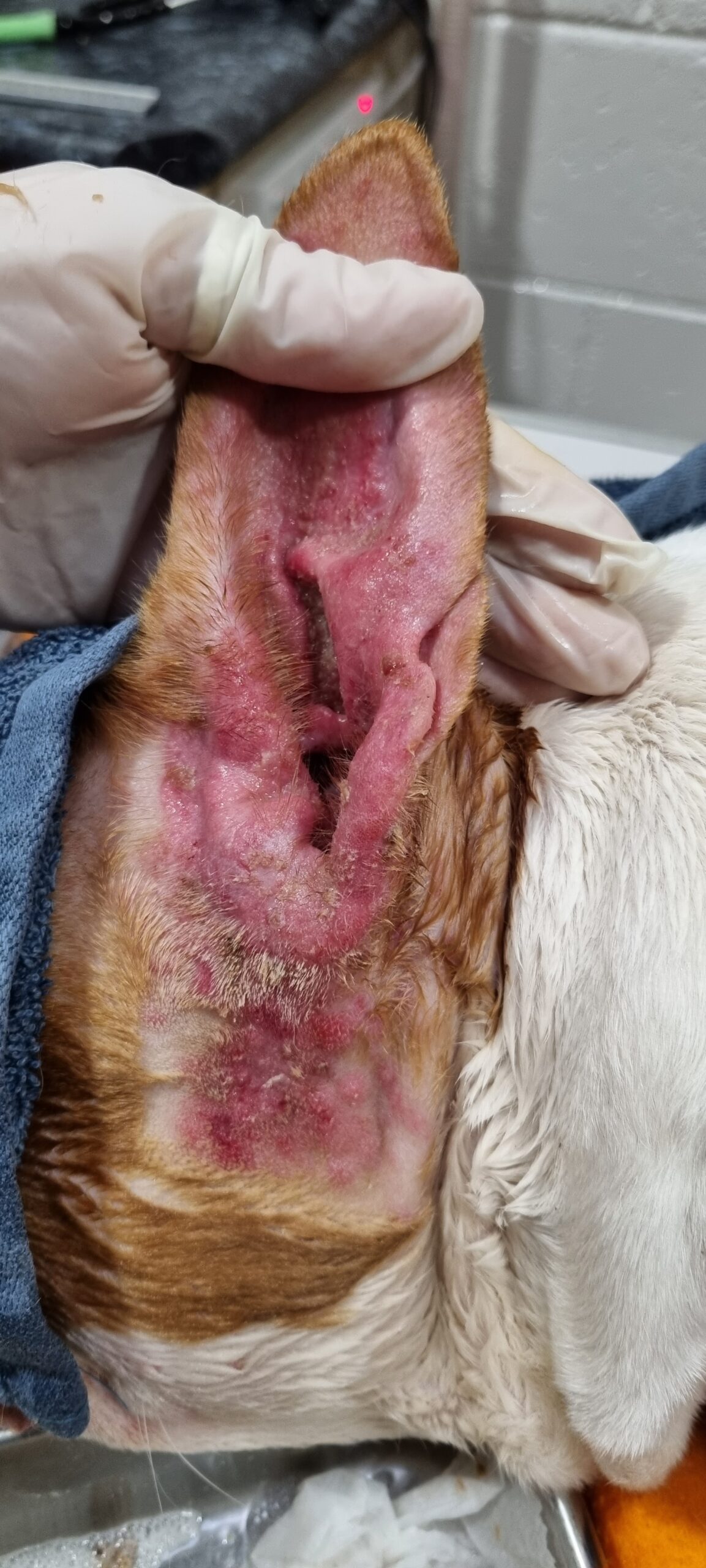
Ear Infections
Ear infections are one of the more common problems we see. Most infections start quickly and will resolve with the appropriate treatment. In some cases the infection can be secondary to an unhealthy/abnormal ear canal which can lead to recurrent problems.
The ear contains its own ‘mini environment’ and this can be easily disrupted by heat, moisture and self trauma. Ear canals are well designed structures that self clean. The skin cells inside the ear canal actually migrate up and out (like our skin cells exfoliate), removing the dirt with them. If this self cleaning does not occur then the balance is upset leading to an increase in bacteria and yeast that cause more damage to the ear canal. The end result is a very inflamed, red, unhappy ear canal, which leads to a very uncomfortable pet.
Watch out for:
- Shaking of the head
- Rubbing ears along the floor or furniture
- Itching behind ears with paws
- Flicking of the ears (especially cats)
- Discharge – may be smelly and can be black, brown or yellow
- Hot and red ears
- A head tilt
Examination and diagnosis involves
- The use of an Otoscope (which has light and magnification) to examine your pet’s ears and make sure there is not a foreign body such as a grass seed contributing to the problem.
- Collection of a sample which is stained with special chemicals to highlight and identify the type of bacteria or yeast under a microscope. This enables us to prescribe the correct medication for your pet and gives the ear the opportunity to heal as quickly as possible.
Treatment involves the use of an appropriate ear medication, generally in the form of ear drops. One of the newest medications we have which has been proving very effective, is a long lasting medicated ear gel which is useful for those difficult to treat or painful ears. In severe cases particularly if there is ulceration and increased pain we may also use an antinflammatory medication to relieve the discomfort.
Managing Chronic cases
It is important to note that in some cases ear problems are chronic, meaning that the ear has become damaged and cannot self clean any more. You may notice that one ear may be different, it may be thickened, have a narrowed canal opening and seems to always be the problem ear.
Tips for management.
- Check you pets ears regularly and compare the two
- Never use water inside your pets ear to clean them
- Clean with a cotton wool or a tissue and use your finger not cotton buds
- An appropriate ear cleaning solution can be helpful to dry and clean the ears if needed
- A dry ear is a healthy one, too much moisture and problems can occur
- It is easier to manage than treat a severe infection
- Ears are part of the skin and so are also effected by skin allergies, which will need to be managed.
For problem ears, regular monitoring and ongoing management at home can help maintain a healthy ear canal and reduce the risk of recurrent infections.
We will help you to work out the management plan at home for your pet.



